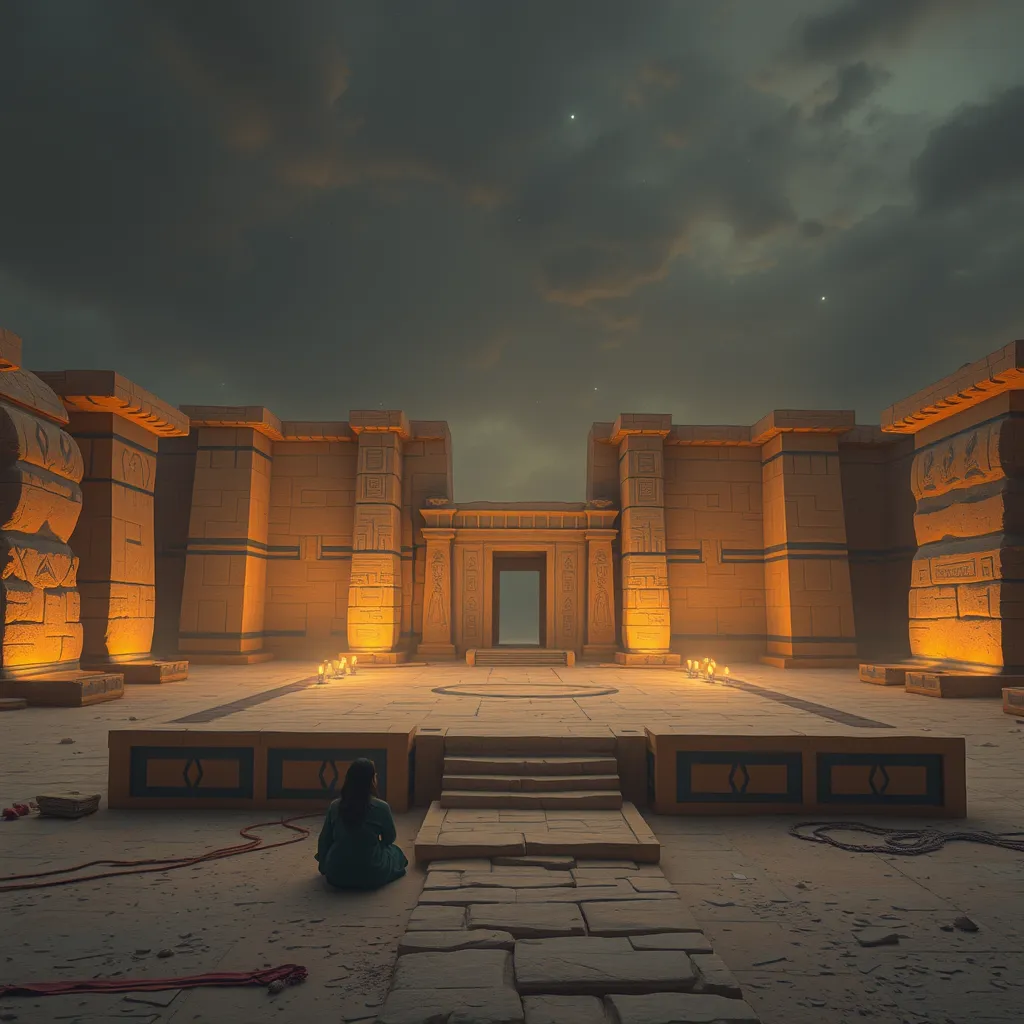The Duat: A Place of Healing and Reconciliation
I. Introduction
The Duat, in ancient Egyptian mythology, represents a complex and multifaceted realm that transcends the simple notion of the afterlife. It is often depicted as a mystical landscape where the souls of the deceased journey after death. The Duat is not merely a space for judgment or punishment; it holds significant importance as a domain of healing and reconciliation.
This article aims to explore the various aspects of the Duat, delving into its historical context, structural intricacies, and the profound themes of healing and reconciliation that permeate this enigmatic realm.
II. Historical Context of the Duat
The concept of the Duat dates back to the early texts of ancient Egypt, where it was first referenced in funerary literature and pyramid texts. These early descriptions established the foundation for understanding the Duat as a critical aspect of Egyptian beliefs regarding the afterlife.
Over time, the representation of the Duat evolved, becoming a more elaborate and richly detailed realm in Egyptian mythology. It was commonly associated with the journey of the sun god Ra during the night, highlighting its significance as a transitional space between life and the afterlife.
For the ancient Egyptians, the Duat was integral to their afterlife beliefs; it was a realm where the souls faced challenges and sought purification before achieving eternal peace. This belief system underscores the Duat’s role not only as a place of judgment but as a sanctuary for healing and reconciliation.
III. The Structure of the Duat
The Duat is often depicted as a vast and intricate landscape, comprising various regions and features that symbolize different aspects of the afterlife journey. These landscapes include:
- Dark and foreboding caverns
- Glowing fields of reeds
- Rivers of water and fire
- Islands inhabited by deities and spirits
Key deities associated with the Duat include Osiris, the god of the afterlife, and Anubis, the god of mummification and the protector of graves. These figures play crucial roles in guiding and assisting souls as they navigate the challenges of the Duat.
The Duat symbolizes a transitional space between the corporeal world and the eternal afterlife, embodying the journey of the soul towards healing and ultimate reconciliation with the divine.
IV. Healing in the Duat
Healing held immense significance in ancient Egyptian culture, deeply intertwined with their religious beliefs and practices. The Duat served as a vital location where souls sought healing from their earthly burdens and impurities.
Rituals and practices associated with healing in the Duat included:
- Purification rites performed by priests
- Offerings made to deities for healing
- Recitations of spells and prayers to facilitate recovery
Numerous stories within the mythology illustrate souls receiving healing and purification in the Duat. One such narrative involves the soul of a deceased person encountering the goddess Ma’at, who embodies truth and justice. Through her guidance, the soul is cleansed of its past misdeeds, allowing it to move towards a state of harmony.
V. Reconciliation in the Duat
The theme of reconciliation is prevalent in Egyptian mythology, emphasizing the importance of resolving conflicts and grievances. The Duat serves as a sacred space where such reconciliation can occur.
In this context, the Duat is viewed as a realm where souls confront their past actions and seek forgiveness. It facilitates the healing of rifts both between individuals and between the living and the deceased.
Examples of reconciliation narratives within the Duat include:
- The story of the soul of a wronged individual confronting their adversary in the afterlife.
- Myths where deities mediate disputes among souls, restoring balance and harmony.
These narratives illustrate the Duat’s role as a transformative space, allowing for healing and the mending of relationships in the afterlife.
VI. The Duat in Art and Literature
The Duat has been vividly represented in ancient Egyptian art and artifacts, showcasing its significance in their cultural and spiritual life. Murals found in tombs often depict scenes from the Duat, illustrating the journey of the soul through various trials and encounters with deities.
Literary references to the Duat can be found in religious texts such as the Book of the Dead, which provides guidance on navigating the afterlife. These texts outline the rituals and prayers necessary for achieving a successful passage through the Duat.
In modern times, the themes of the Duat have inspired adaptations in literature and art, reflecting its enduring legacy and relevance. Contemporary interpretations often emphasize its symbolism of healing and reconciliation, resonating with current spiritual practices.
VII. The Duat’s Influence on Modern Spirituality
In recent years, there has been a resurgence of interest in ancient Egyptian beliefs and spirituality. The Duat, in particular, has captured the imagination of those seeking deeper understanding of the afterlife and personal healing.
Today, the Duat serves as a metaphor for healing and reconciliation in various contemporary spiritual practices. It encourages individuals to confront their past, seek forgiveness, and embrace transformation.
Comparisons can also be drawn between the Duat and other spiritual concepts of the afterlife, such as:
- Purgatory in Christian theology
- The Bardo in Tibetan Buddhism
- Shamanic journeys in indigenous traditions
These parallels highlight the universal themes of healing and reconciliation that transcend cultural boundaries.
VIII. Conclusion
In summary, the Duat emerges as a profound place of healing and reconciliation within ancient Egyptian mythology. It serves not only as a realm of judgment but as a sanctuary where souls can seek purification and resolve past grievances.
The enduring legacy of the Duat continues to inspire cultural and spiritual reflections, encouraging individuals to explore their own journeys of healing and reconciliation. By embracing the lessons of the Duat, we can foster understanding and transformation in our lives.




